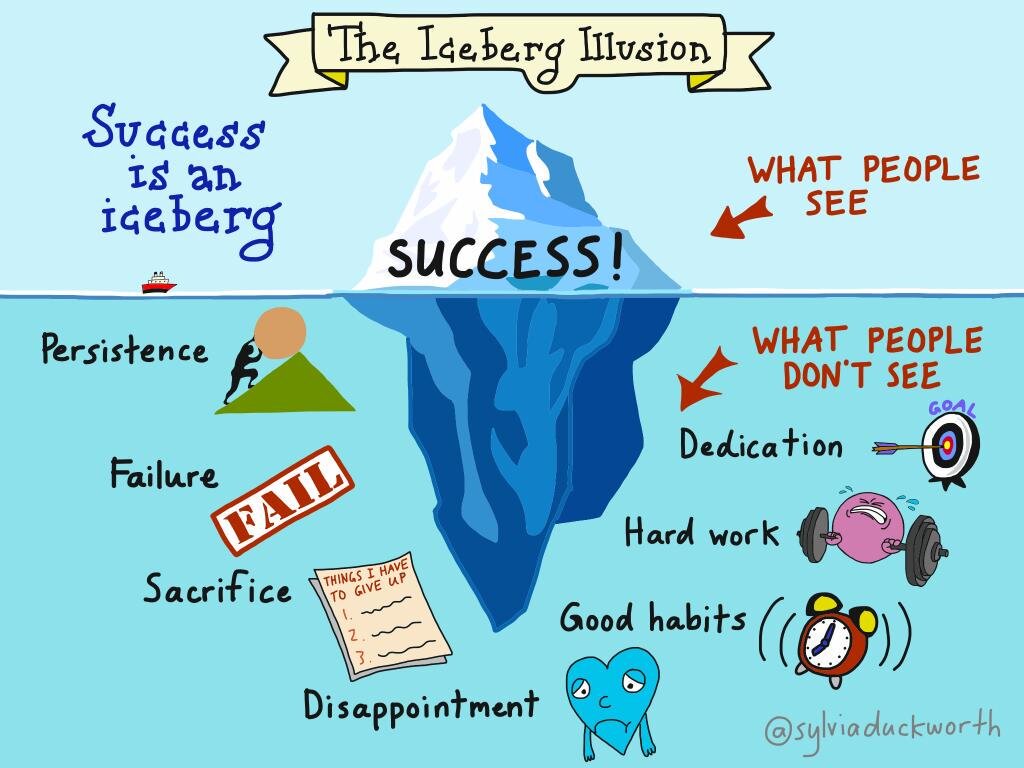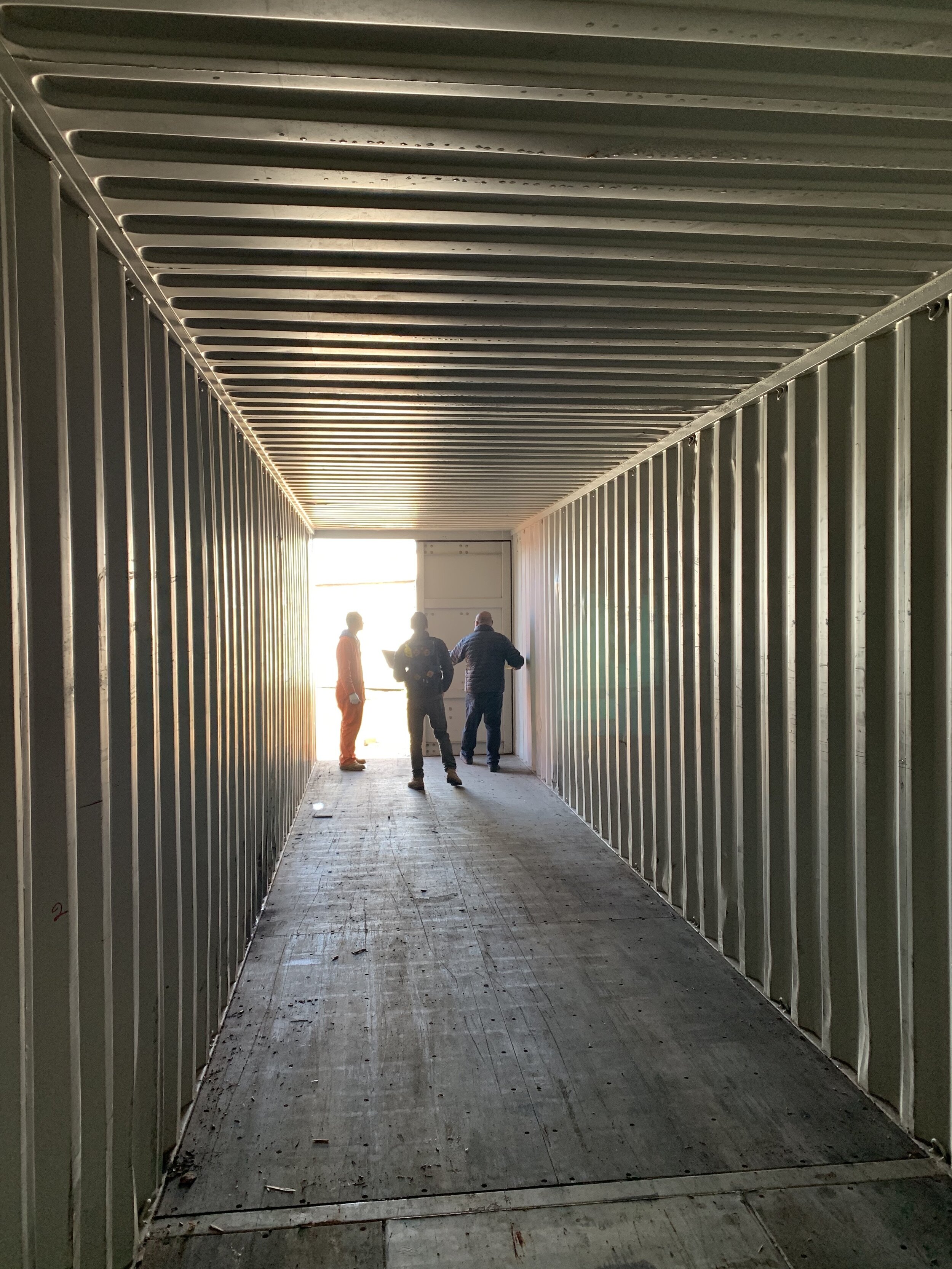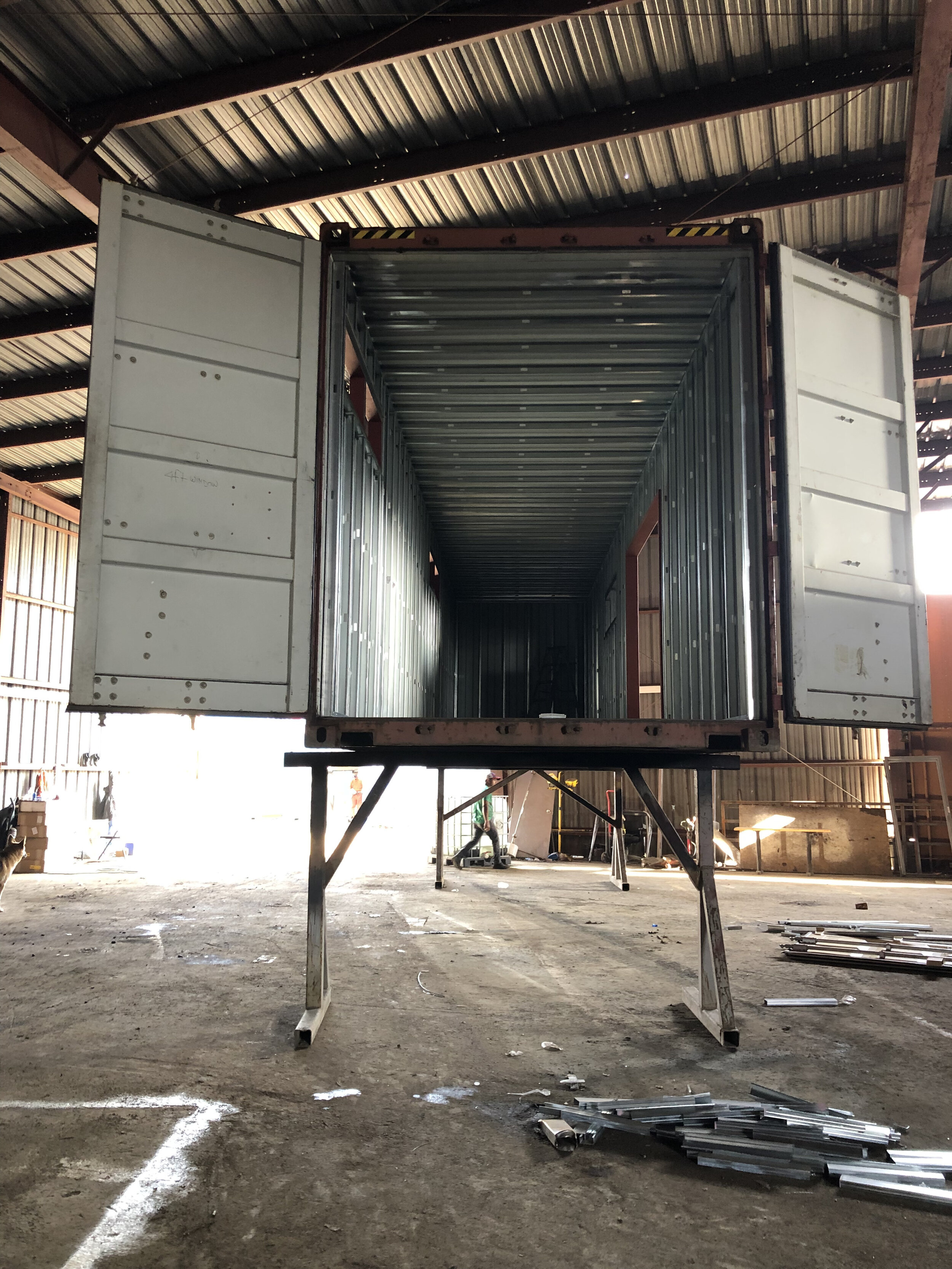On Overnight Successes and Self Made Entrepreneurs
Source: Thellab
I’ve always liked the iceberg analogy.
Simply stated, an iceberg is more than what you see above the water’s surface. In fact, the majority of an iceberg’s mass is underwater and the rest is left to the imagination.
Over the last few months, I’ve been taking interviews and talking to close friends about where I’ve been spending my time and where I’d like to spend more of my time. During the Covid-19 lockdown (which honestly has not ceased in our household), I’ve put a concerted effort into self-education and introspection. I’ve read more books in the last year than I have in the previous 5 years. I’ve done more personal research on new topics (including ones I don’t agree with) and organized my thoughts and research into a knowledge base that I add to every day (thank you Notion!). That said, regardless of what topics and areas I end up digging into, I have a focal point for my search. Right now, it’s urban upgrade — the intersection between our cities, climate change, and technology.
I believe it’s important to have a focal point because it helps answer easy questions, eliminates self-doubt, and guides us to the right answer or affirmation when we hit roadblocks. This is not a mission statement or a vision statement, think of it as a seed or a node that you can build on to eventually create a mission statement.
Solo ADU Series by Bay Modular
Source: r/urbanhell, homeless camp in foreground, Seattle skyline in the background
When I started Bay Modular in 2018, I wanted to help fix the homelessness issue that was running rampant (and still is) in Oakland. It seemed like every week, a new camp of tents was sprouting up under overpasses or behind Home Depot and other big-box department stores. The juxtaposition between proliferating homelessness and cutting-edge skyscrapers was an image of my city that I cringed watching.
Although Bay Modular today is a prefab ADU company that builds affordable backyard homes, it didn’t start that way. I started the business as a project to create affordable, hospitable, and humane individual housing accommodations for the unhoused. The goal was to replace the TuffShed phase of homeless housing that was growing in Oakland, which has left many actual residents wanting, even as policymakers cheer.
My focal point: Homelessness, affordability, and transitional spaces
The hypothesis: Can we manufacture small footprint, individual accommodations for a homeless population that any homeowner would be proud to put on their property?
Over time, as it became clear Oakland was doubling down on their TuffShed initiative, I abandoned the local and state funding approach and narrowed it further.
Focal point refined: New homelessness, preventing the transition into homelessness for low-income households and low earners
The new hypothesis: Can we boost housing stock by modifying prefabricated structures to jumpstart the manufacturing process?
V0
In 2018, I took that focal point and started researching prefabricated structures. Tapping into my construction background and learning from my family’s network of general construction, I learned about SIPs panels, prefab building kits (the likes of Sears, now Amazon), CLT panels, and eventually modular (specifically volumetric modular, not kit-of-parts).
My search landed on ISO shipping containers — a controversial topic that is both beloved and hated by industry experts, architecture students, and homeowners. Although much has been written, designed, and even deployed in the container home world, I sought to use the containers as a building material rather than a self-contained structure.
My first iteration stripped down the container to its bare assets and followed a similar path to those you might find on Pinterest.
After months of experimenting and YouTubing (thanks for some brilliant ideas Ben Uyeda), I sunset the idea. The 40’ container created just shy of 250 finished interior square feet and the living quarters were meager to state the least.
Instead of scrapping the idea as a whole, I fell back to the focal point, researched other prefab kits, and doubled down on the container. Instead of using the structure as a whole, perhaps even connecting multiple 40’ HC ISO containers, I used portions of the structure as prefabricated walls. By cutting the container in half (almost) and removing partitions, I was able to create free-standing modules that we later approved by the HCD.
Although my goal from the outset was to create homeless housing shelters at an 8x10 footprint, I realized that preventing the transition to homelessness for low earners was a transitional phase that could be addressed by small footprint accessory dwelling units (ADU). These 16x24 buildings would need to meet my initial criteria: deployable (transportable), affordable, and humane. This became the blueprint for our prefab modular (deployable), studio ADU (affordable), that met the modern aesthetic (humane) that we’ve seen come into popularity for many new 5+1s and modern home developments.
Bay Modular Solo 2 ADU Render V1
We use Thermory Benchmark White Ash Cladding on our builds
V1
After all the planning, iterating, and designing, we eventually landed on version 1 of the Solo 2 ADU. It was comprised of 2 modified shipping container units that created our “superstructure.” This later became a structural system for our Solo 3 and Solo 4 models, which helped extend our product line and reduce our overhead costs for engineering a separate building system.
From the beginning (ideation) to end (model), we took 1.5 years of R&D. By the end of 2019, we had an HCD-approved version of our Solo 2 ADU, stamped engineering plans, partnerships with manufacturers and suppliers, and a growing list of vetted and eager customers that we sourced exclusively online.
V1 has been our emphasis for the last year through the pandemic and into 2021. While the Solo 3 and Solo 4, and even our Solo 1 Office are still desirable products, our Solo 2 has been our bread and butter for the last 1.5 years since we completed our first manufacturer’s certification.
Ventura
After approval, we were quick to soft-launch our product. With a few units in development and a standing model in Oakland, I put out a website and spent $100 a week on AdWords. After 6 months, we grew our waitlist to 800 and signed 10 contracts, but none would be more important than the Ventura project.
To this day, it has been our most challenging project. It required the most of my extra time and additional resources from last-minute materials suppliers to local crane operators. At one point, I spent more time talking to the building department head at the City of Ventura than I did anyone else — creating iterations of plans that were pre-approved by the state with the hopes of pushing the plans through and delivering our ready-made unit from Oakland to Ventura.
After months of back and forth, rechecking, and planning with SoCal Edison, we delivered our containers and set the units down.
Fast forward several months, the unit was complete and landscaping is done, calling this a complete project in early 2021.
Throughout the project, I updated friends and family through social media and the occasional text message about big stages. I’ve sent pictures of the 90% in Oakland, the lift and set, and the finished product over the course of 6 months — a reasonable timetable for any typical ADU project, let alone a prefab modular container build in Ventura (a precedent).
Recap
Ventura was an important and critical project because it represented my path of most resistance. It was the longest project in our short history but touched every part of the journey from R&D to the final installation. It was the first model of its kind, which drew direct connections to the initial research, customer surveys, and web design.
It started in early 2018, it was approved by the state in 2019, it was approved by the city in 2020, and it was complete in 2021.
Most people like the photos they see on social media, but many won’t know the setbacks, tradeoffs, and partnerships that were forged along the way.
I owe the Ventura project completion to so many people — individuals that represent companies, but mostly their own values and integrity. I owe the good people at Katerra for helping me source our first set of materials for the model. I owe the owners at Economy Lumber in Oakland for helping with last-minute materials specific to this build. I owe a lot to my new partners, my colleagues, and sales reps for bringing me the good news and the bad news at each step. And I owe my wife and family for providing the at-home support, which was critically needed for sleepless nights and stressful setbacks.
There is no such thing as an overnight success or a self-made entrepreneur. We all take aid and assistance in every stage and step of our development. It’s important to acknowledge the people that helped us along the way to our successes because people make progress, not the businesses they work for.















